Vulcani d’Italia
After seven months in New Zealand I’d seen a few volcanoes. Truth is, Aotearoa is pretty much a whole bunch of volcanoes linked together by other volcanoes. Most Aussies are aware of just how volcanic New Zealand is, however I didn’t realise that Italy has some rippers of its own. Ok well maybe that’s common knowledge but I didn’t bloody know alright? Geez. Ignorant though I was, I would soon find out more about a couple of Italy’s main hotspots.
Sailing north along the east coast of Sicily, we cruised past Mt Etna, Italy’s towering 3350 metre high volcano. At first I couldn’t figure out if it was a mountaintop or a cloud; it was enormous. Etna has been active for a lazy 2.8 million years.

As the picture I took is crap, I did a little photoshopping to make it a bit easier to make out. I think I’ve still managed to maintain the integrity of the original image.
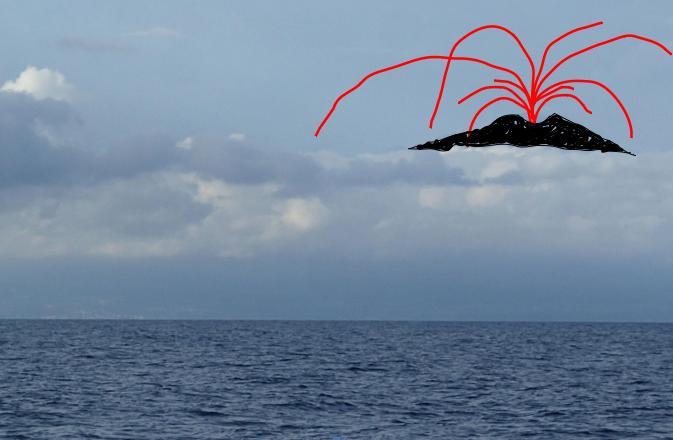
Admittedly I’ve used a bit of licence, as Etna wasn’t actually erupting when we sailed by. Turns out we were early, and she let rip a mere three days later.
Not to be disheartened, we sailed on to the next volcano on the list: the ever-active Stromboli, which has been in a near constant state of eruption for several thousand years. We planned to arrive at night in the hopes of seeing a show.
Around midnight the island of Stromboli loomed out of the darkness. We sailed our way around to the north side of the island, where we got our first smell, sight and sound of the volcano. With the scent of burnt clay in our nostrils, we watched the pulsing red glow far above.
Then, just like the classic National Geographic footage, Stromboli shot up a small jet of lava. Next came a deep ominous rumble. Up until then we had been keen to see some big volcanic action, but I have to say the sound Stromboli made after the tiny squirt of lava got me thinking. It was a reminder of the awesome power that was barely contained within the mountain, and it made us feel a little vulnerable to say the least.
Apart from the ever-present red glow, Stromboli appeared to be in a restrained mood, so we set about finding an anchorage for the night.
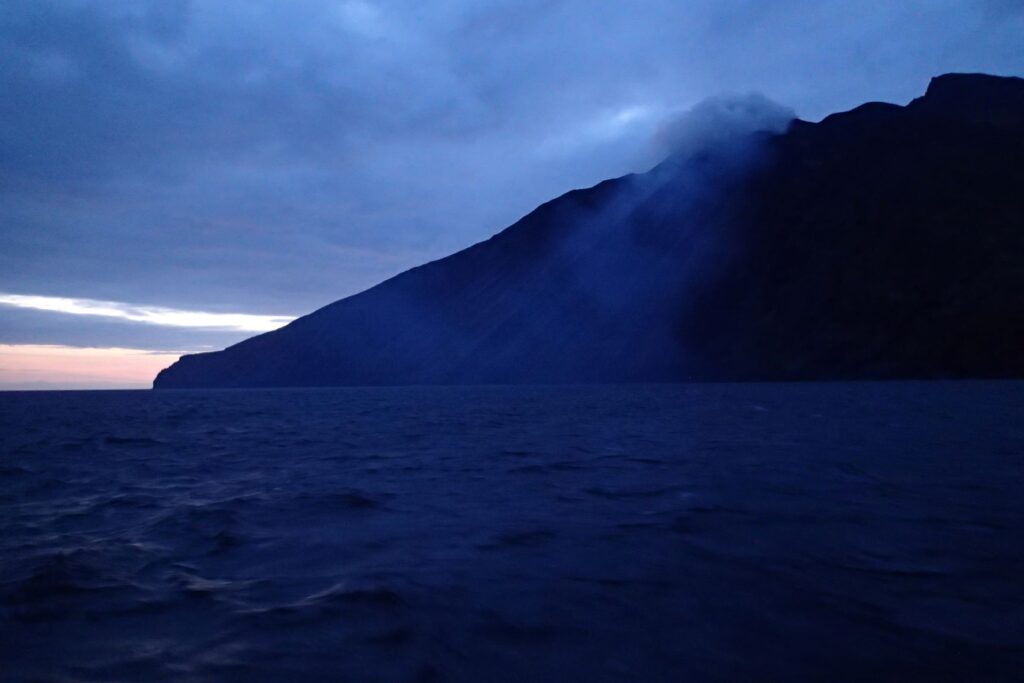
I was more than a little surprised to learn that there is a town of 300 people on the island. And when I say ‘island’ I mean ‘volcano’. And when I say ‘volcano’ I mean constantly erupting big active bastard volcano. Next day we went ashore to have a look.
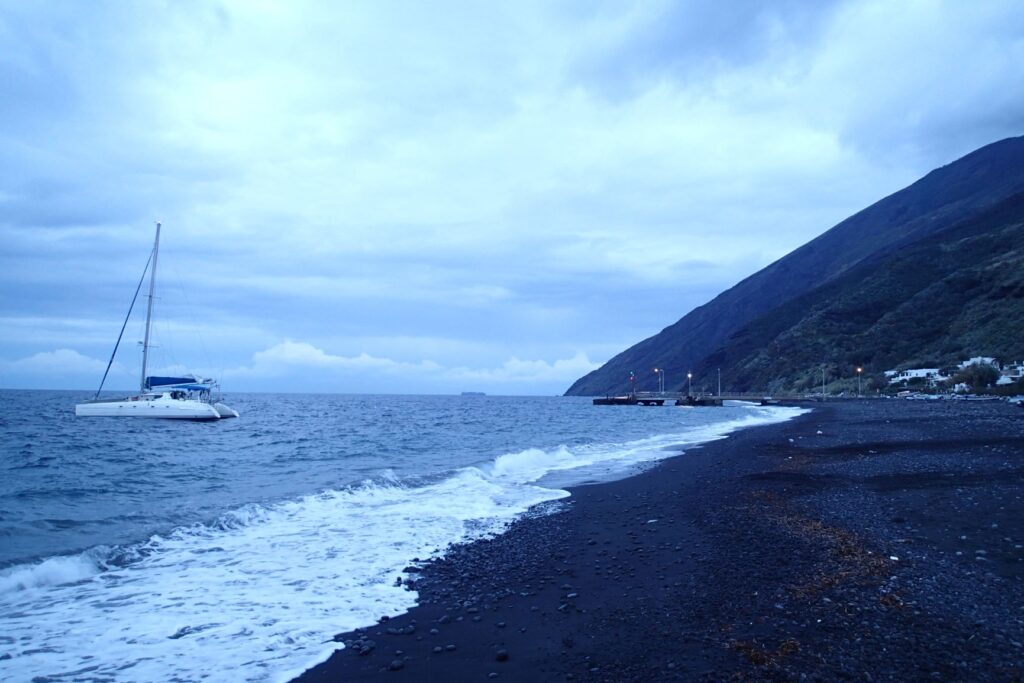
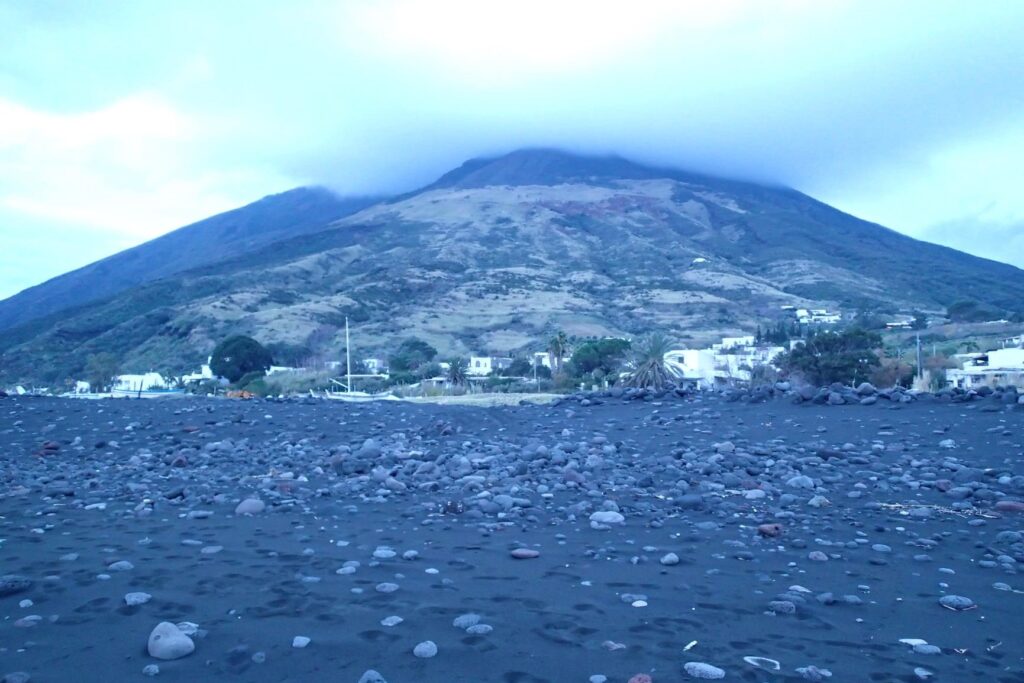
Glad to stretch our legs, we crunched along the beach, then turned inland and back along the edge of town. I can understand the locals’ desire to live in a quiet (well, figuratively speaking) spot away from it all (especially in staggeringly populated Europe), but I still had trouble reconciling the fact that a town existed on the edge of one of the most active volcanoes on the planet.
We passed several warning signs informing residents what to do in case of tsunami. The sign helpfully advises that in the case of ‘strong volcanic explosion’ one should ‘leave the coastal area immediately’. Unfortunately for Strombolites, leaving the coastal area would entail heading up the mountainside towards the eruption. Presumably this is also not advisable, so perhaps it’s best just to stay home, go about your business, and pretend nothing’s happening.
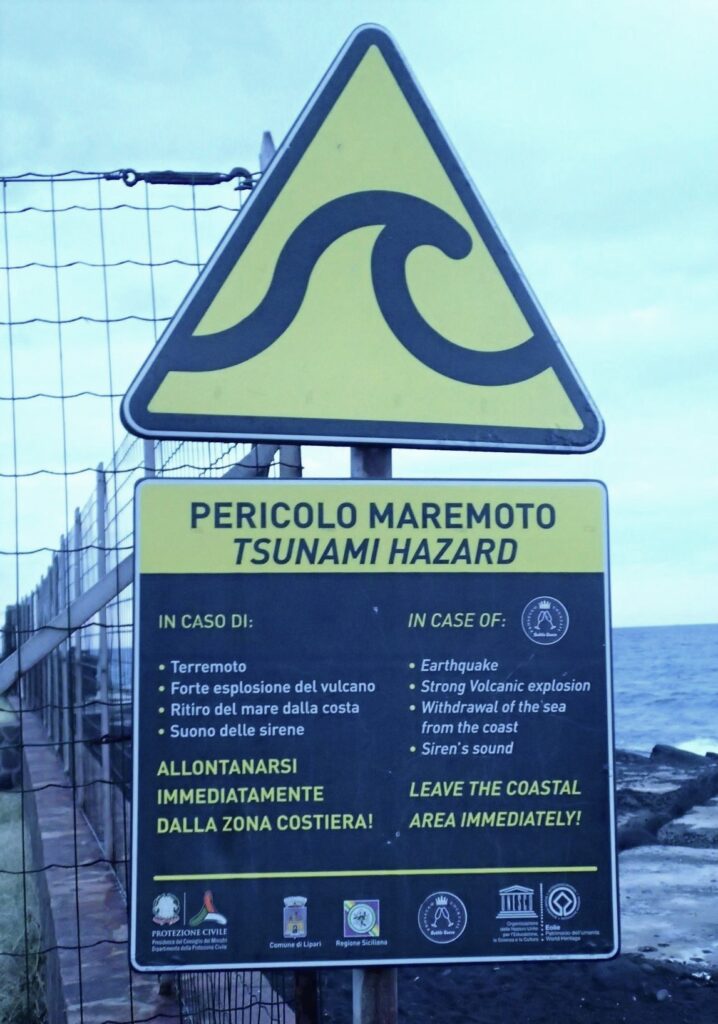
Stromboli boils away constantly, and occasionally rains a few lava bombs and boulders on the town. Miraculously, eruptions have killed relatively few people in the last 100-odd years: four fatalities in 1919; six dead and 22 injured when Stromboli let go big time in 1930; and one killed in 2019. If I was a resident I wouldn’t find these statistics particularly reassuring. The big one could, presumably, occur at any moment.
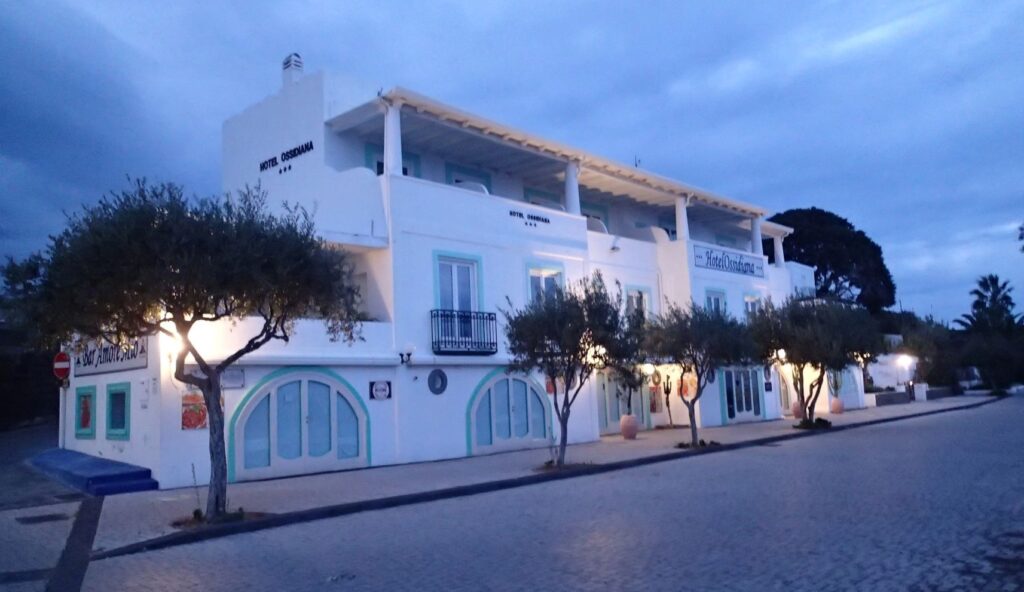
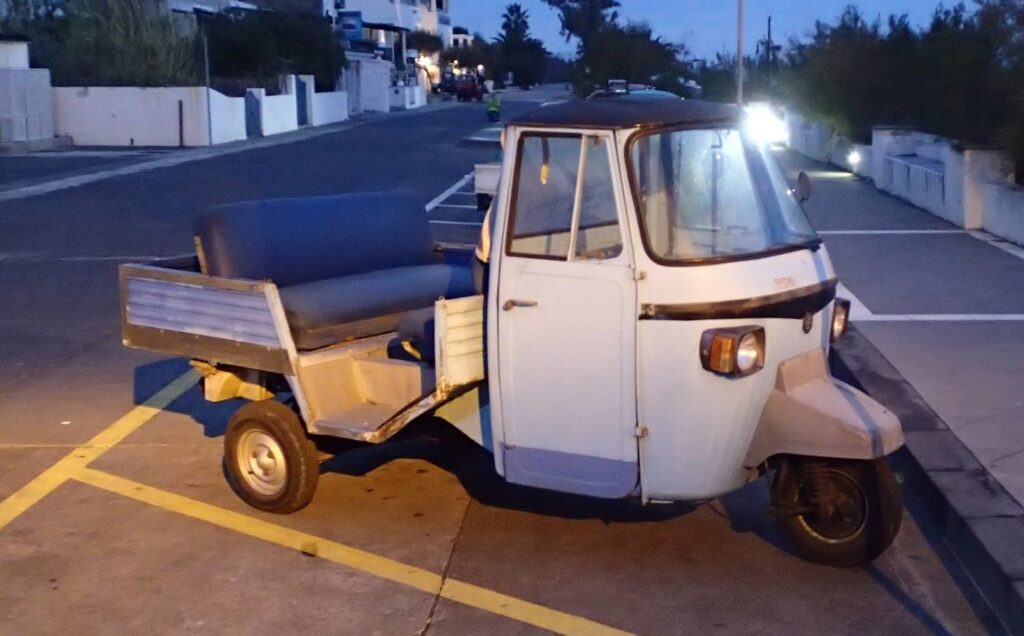
The next morning we weighed anchor at 5am, hoping to see some pre-dawn fireworks from Stromboli. As we sailed past, the mountain bid us farewell with several geysers of incandescent red lava. I whooped uncontrollably.
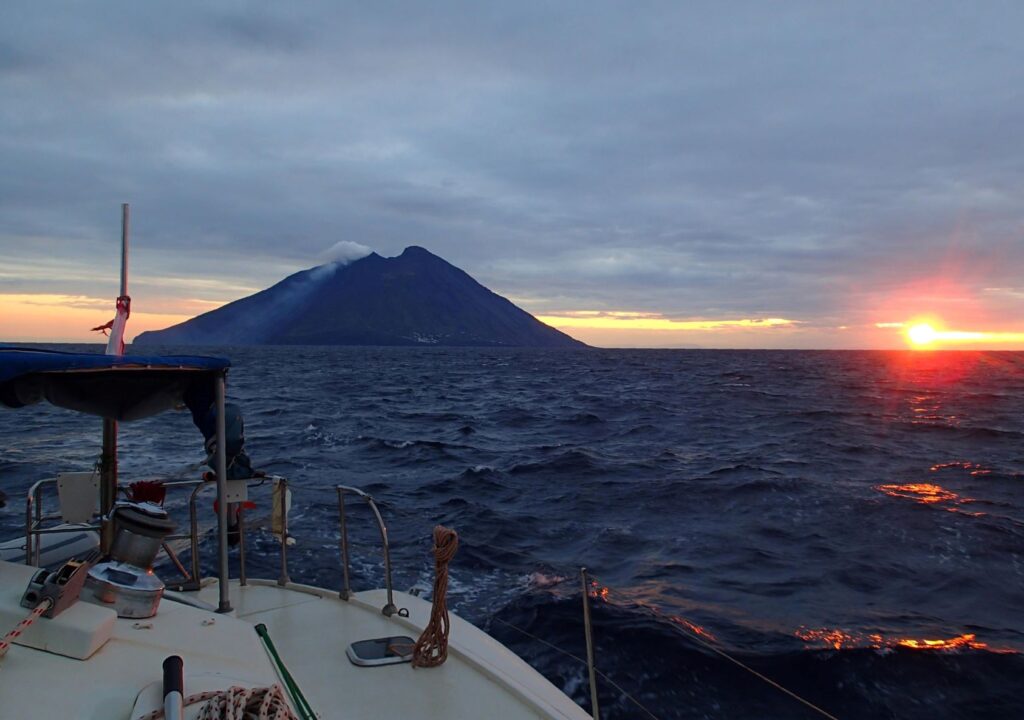
As the sun rose we left the smoking Stromboli behind us. We were grateful for what had been a fantastic experience, but also a little relieved to be out of the firing line.
For more about Mt Etna click here, and for more about Stromboli click here
If you enjoyed this post, you may also like Sardinian Heavy Weather, Storm Front
Leave a Reply